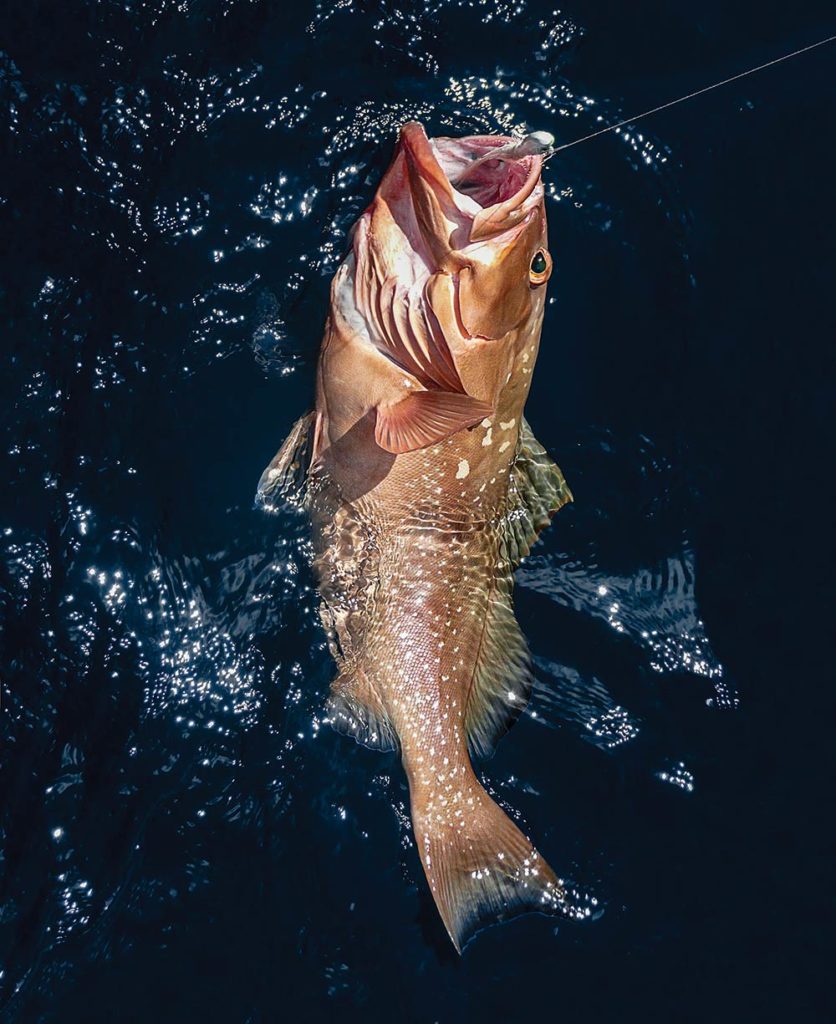
Thirty miles off Sarasota, Florida, our fish-finder screen showed jagged, hard bottom and a number of marks right above it, evidence that the spot held fish. On the flat, sandy bottom of the Gulf, any structure attracts bottomfish, like snapper and grouper, and pelagics, like amberjacks, almaco jacks, barracuda and cobia. Structure that harbors the bigger fish is generally found farther offshore.
Capt. Mike Adams maneuvered the Jupiter 34 into position, then joined the crew in the cockpit and four of us sent baits to the bottom. The reception below was immediate, and all the rod tips went skyward. Everyone hooked up, and a fat mutton, a mangrove and a pair of lane snappers cleared the gunwales minutes later.
While numerous wrecks and artificial reefs lie closer to port, Adams opted to keep going and fish over natural, hard bottom in 50 to 60 feet of water. “I usually find a variety of bottom dwellers out here,” he explained, “and these fish don’t get hammered like those that hang around the more accessible wrecks and reefs.”
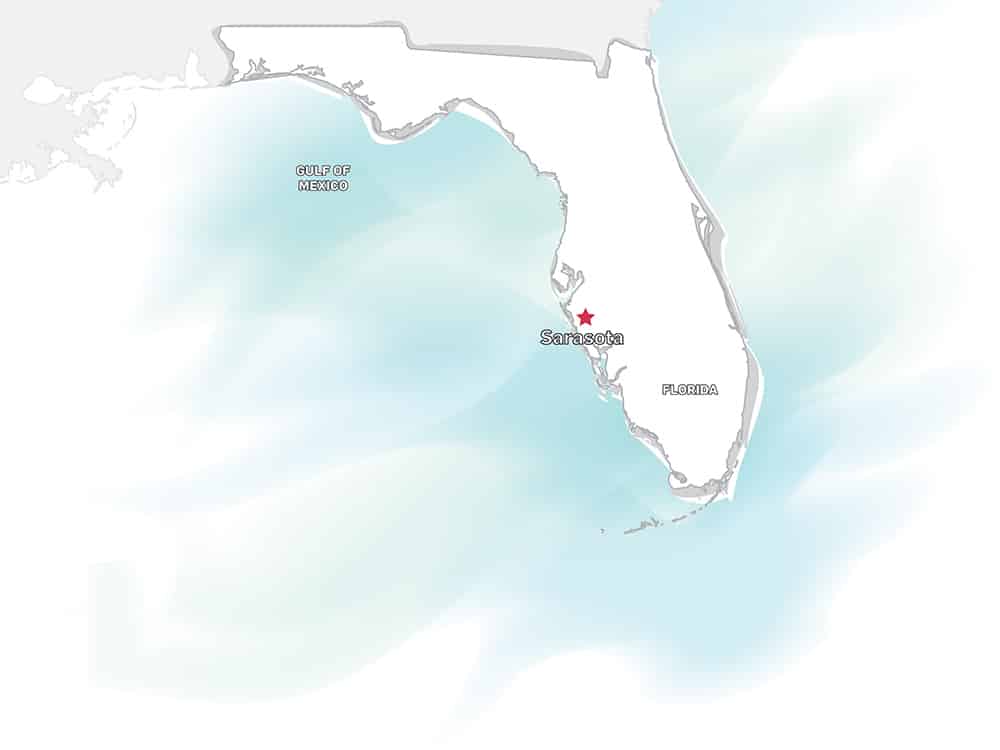
No Chum Required
A loud grunt came from the starboard corner of the cockpit, and I turned to see Todd Albrecht battle an 8-pound red grouper and put it on ice.
Knocker rigs and chunks of sardines were doing the job on keeper snappers and groupers, but seeking bigger came, I made a ballyhoo plug, cutting off the head and tail of the bait, and butterflied the thicker half of the core. Raising and dropping the rod tip, I fluttered the butterflied bait enticingly off the bottom. A heavy jolt called for a vigorous response, so I set the hook hard and went to work, and an 11-pound red grouper soon floated behind the boat.
Amazingly, we never chummed. We just kept dropping our baits, and the bites came fast and steady.
Get the Drop
The light wind and current kept the anchored boat over good bottom and its ravenous inhabitants, and allowed us to present our baits over a large swath of bottom down-current.
When the wind picked up and changed direction, making it harder to stay on top of the fish, we repositioned, and Adams and Albrecht tied on bucktail jigs, cast them in opposite directions, let them fall to the bottom, and then began erratic retrieves. Both were rewarded with chunky red grouper.
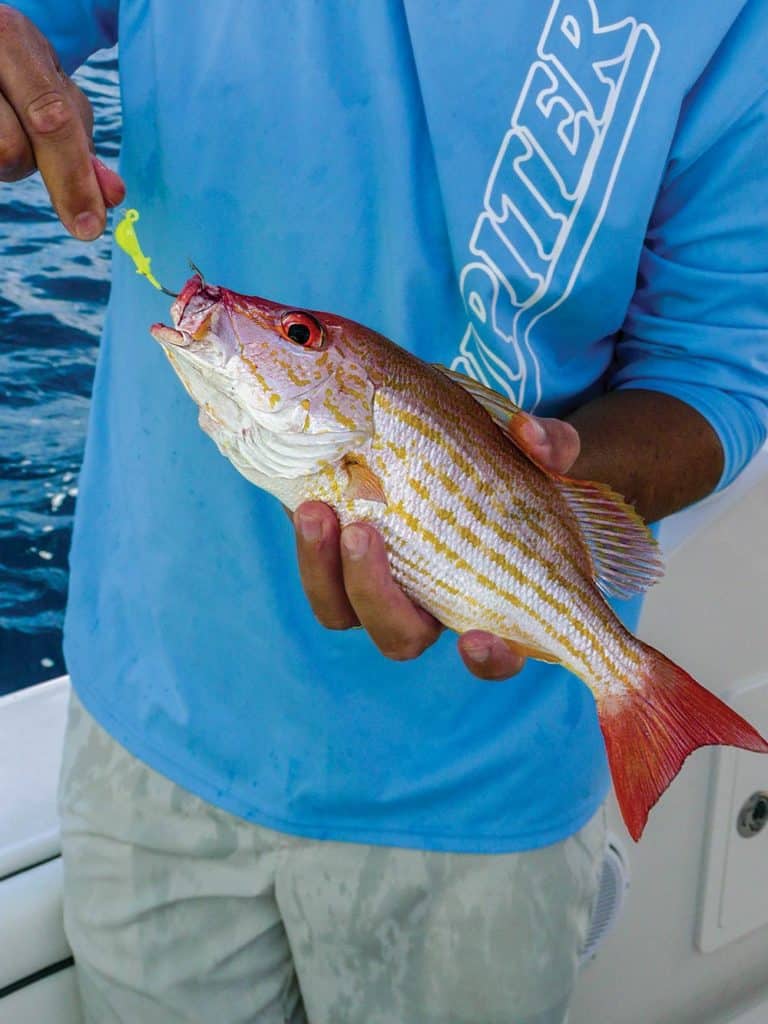
I upped the ante with a 6 1/2-inch Tsunami Deep Shad, plucking a pair of nice reds in the process. I continued yo-yoing the big swimbait straight off the transom, and half a dozen casts later, a 16-pound gag intercepted the lure.
If you’ve never felt the brute power of a hooked gag grouper, imagine snagging a Winnebago as it speeds down the highway. My 20-pound spinning tackle made things a bit too sporty for comfort, but the reel loaded with braid was somewhat reassuring, and the drag eventually drained the fight out of the grouper.
Anchoring Versus Drifting
Anchoring produces the most consistent results. Otherwise, drifting baits while keeping tabs on your fish finder allows you to scout a structure and its surroundings to mark where the resident fish tend to hang out.
If you’d rather anchor, take into account the boat drift and set up to send baits back and down to the fish.
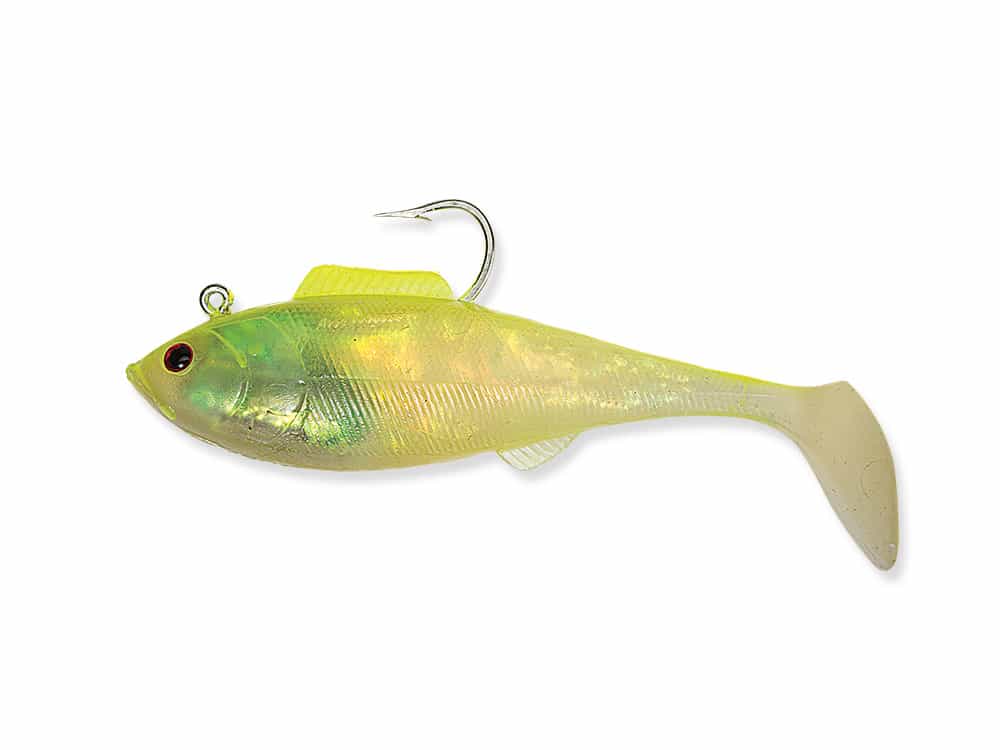
Seasons and Species
Bottomfishing remains productive all year along Florida’s Gulf coast. Various species, nevertheless, peak at different times and depths, and in some cases, there are closed seasons to take into account.
Red grouper aggregate to spawn in April and May. Gag grouper go shallow in winter and spring when fish you usually catch in 50 to 100 feet of water move to 20- to 30-foot depths, where they are susceptible to trolled deep-diving plugs. Mangrove snapper, available year-round as shallow as 10 or 15 feet, spawn in late summer in 50 to 70 feet. Black grouper, the big ones, prefer depths closer to 200 feet, which lie about 80 miles out and also put you in jumbo red snapper territory.
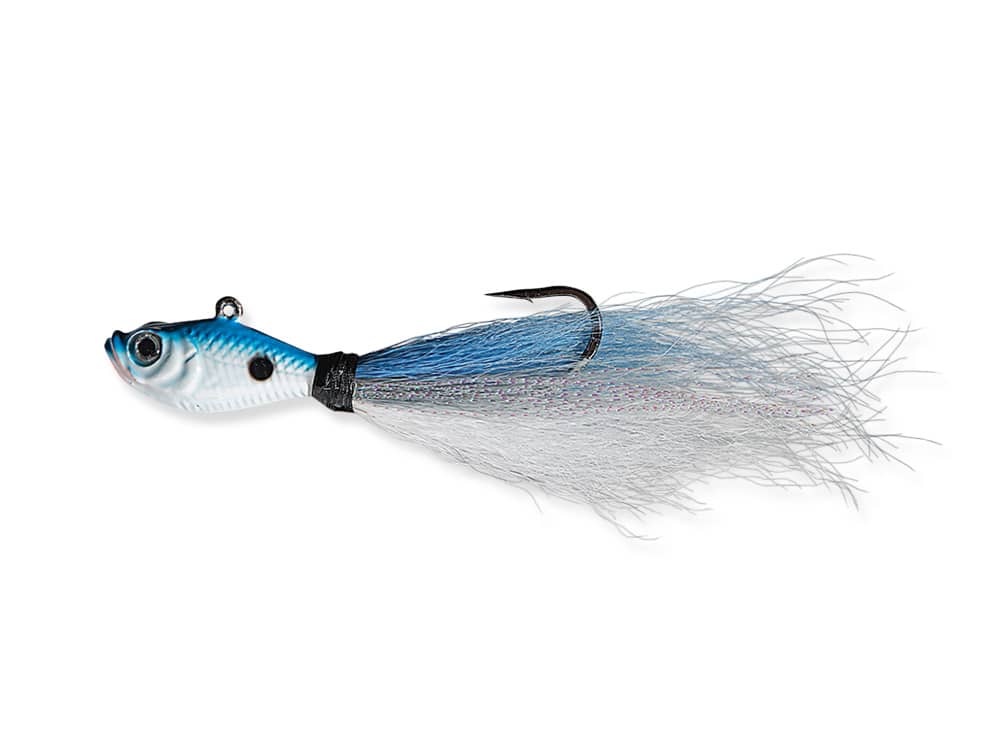
Long-Range Ready
The payoff of lengthy treks in the Gulf can be spectacular, but you should be prepared for the unexpected. Make sure your electronics are working properly (take a backup VHF radio and plotter or GPS, if possible), carry extra food and water, monitor the weather forecast not only before you leave but periodically while out on the water, and leave a float plan with friends or family.
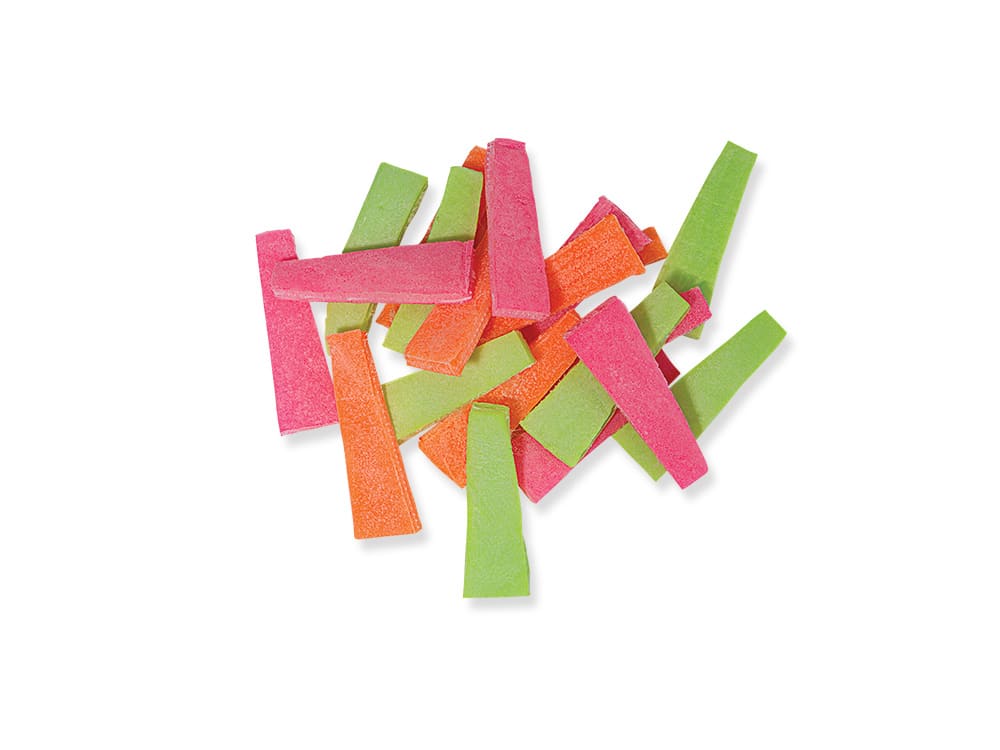
SWS Planner
What: Various groupers and snappers Where: Florida’s central Gulf Coast When: Year-round Who: The following charter captains know where to find great bottomfish action.
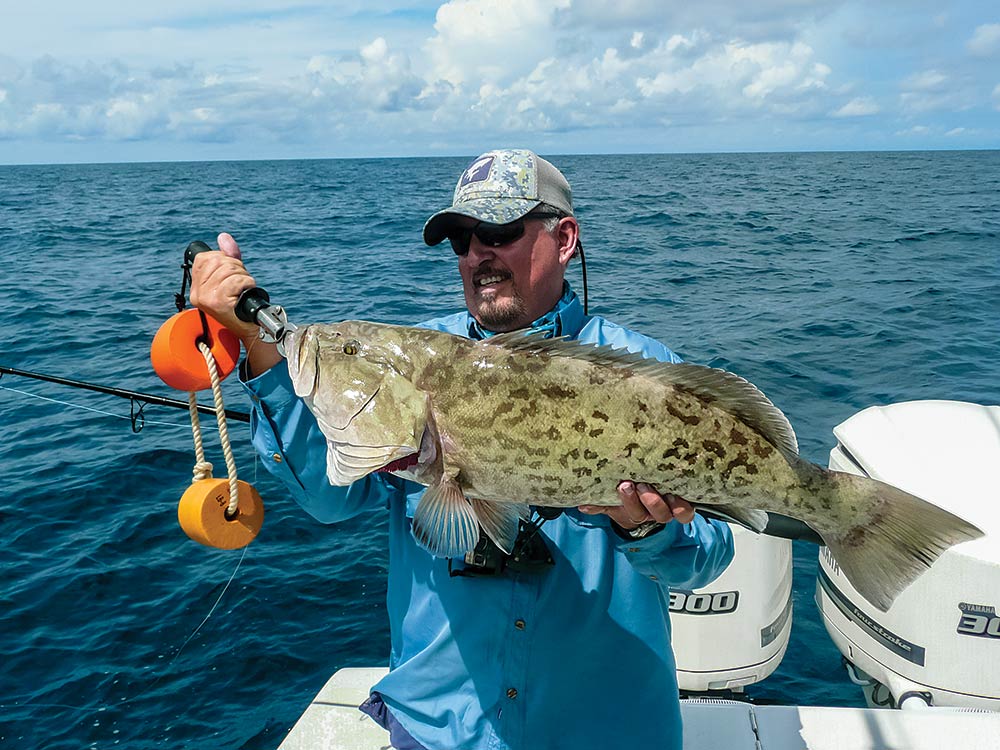
Sarasota, Florida
Capt. Bob Breton flafishingcharter.com 941-276-5987
Venice, Florida
Capt. Ed Johnson fish-factor.com 941-321-1567
SWS Tackle Box
Rods: 20- to 30-pound spinning for snapper and small grouper; conventional 30- to 50-pound for medium grouper, 50- to 80-pound for big grouper Reels: Matching size spinning or conventional Line: 20- to 30-pound braid for snapper and small grouper, 50- to 100-pound braid for big grouper Leader: 20-pound mono for small snapper, 30-pound for big snapper and small grouper, 50- to 100-pound for big grouper Hooks: In-line circle hooks, 1/0 to 3/0 for snapper, 4/0 to 8/0 for grouper Bait: Chunks of sardines, herring, ballyhoo, squid; live pilchards or pinfish for big grouper and snapper
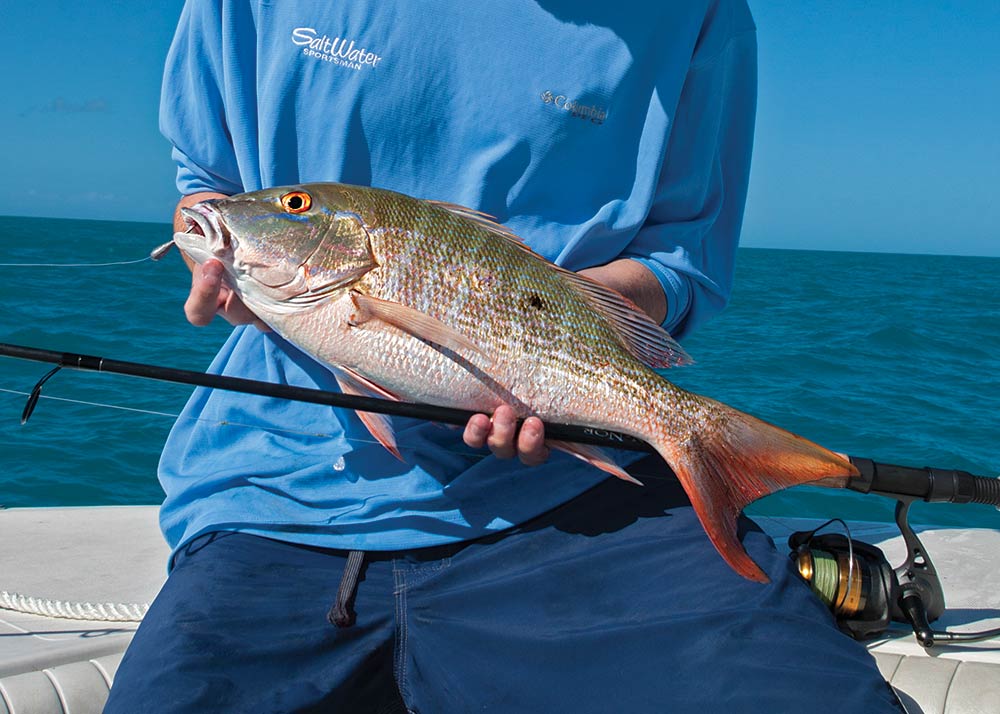
Fast Facts for Success
Go Hard: Just about any hard bottom or structure in the Gulf of Mexico holds bottomfish.
Deep Thoughts: The deeper the hard bottom or structure, the larger and more abundant the bottomfish.
Dead or Alive: Oily baitfish attract more fish and get more bites. Liveys and lures often entice the bigger, wary fish.









